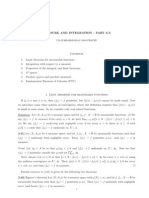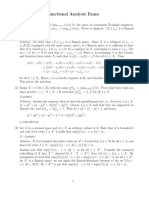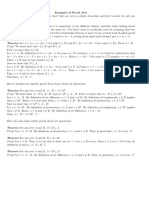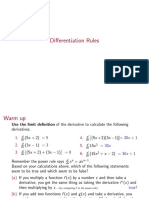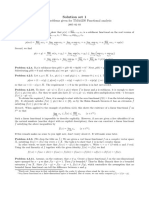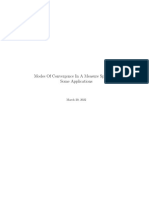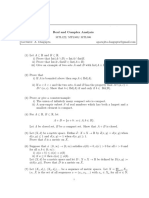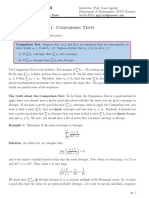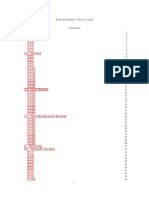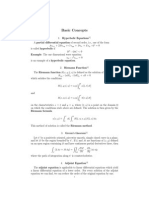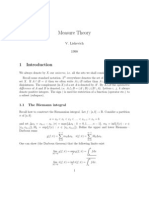0% found this document useful (0 votes)
227 views2 pagesReal Analysis Exercises: 1 The Real Numbers: Sets, Sequences, and Func-Tions 2 Lebesgue Measure
The document contains 3 exercises related to Lebesgue measure and sets. Exercise 1 shows that the measure of set B is greater than or equal to the measure of set A, using countable additivity and the fact that measure is always positive. Exercise 2 shows that the measure of set A is equal to some finite number c, by using countable additivity and the fact that the measure of the empty set is 0. Exercise 3 writes a collection of sets as a countable collection of disjoint sets, and uses countable additivity, monotonicity, and properties of intersections to show that the measure of the union is less than or equal to the sum of the individual measures.
Uploaded by
Angie Hyunji MoonCopyright
© © All Rights Reserved
We take content rights seriously. If you suspect this is your content, claim it here.
Available Formats
Download as PDF, TXT or read online on Scribd
0% found this document useful (0 votes)
227 views2 pagesReal Analysis Exercises: 1 The Real Numbers: Sets, Sequences, and Func-Tions 2 Lebesgue Measure
The document contains 3 exercises related to Lebesgue measure and sets. Exercise 1 shows that the measure of set B is greater than or equal to the measure of set A, using countable additivity and the fact that measure is always positive. Exercise 2 shows that the measure of set A is equal to some finite number c, by using countable additivity and the fact that the measure of the empty set is 0. Exercise 3 writes a collection of sets as a countable collection of disjoint sets, and uses countable additivity, monotonicity, and properties of intersections to show that the measure of the union is less than or equal to the sum of the individual measures.
Uploaded by
Angie Hyunji MoonCopyright
© © All Rights Reserved
We take content rights seriously. If you suspect this is your content, claim it here.
Available Formats
Download as PDF, TXT or read online on Scribd
/ 2



